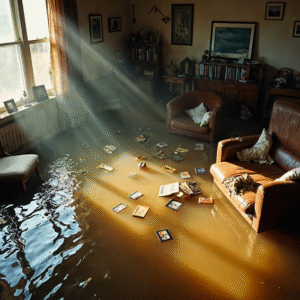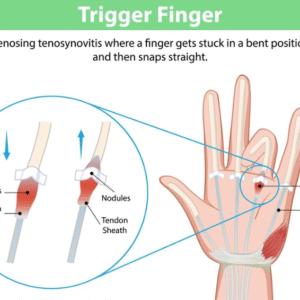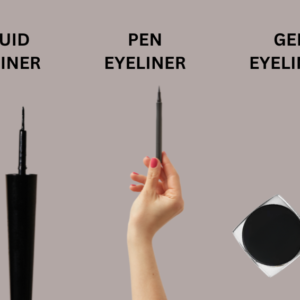Thousands of people diagnose themselves with insomnia, parasomnia, and dyssomnia every day. If you speak with your neighbors, at least six out of ten will tell you that they have a problem sleeping. Insomnia has become the buzzword for this generation.
Any 12-year old unable to sleep due to long naps during the day or a large Coke in the evening calls himself or herself an insomniac. Adults, who have unpleasant dreams night after night from heartburn or faces trouble remaining asleep due to arthritis often, say they have parasomnia.
However, that is not right. These are parts and parcel of human sleeping. All healthy human beings sleep well on most nights, and on others, they might find it difficult to fall asleep or remain asleep. That can be due to untimely naps, too much caffeine in the evening or the lack of enough workout. That does not make them a victim of sleep-wake disorders.
Then, there are others, who go through unsatisfactory sleep night after night. Each night they go to bed without knowing when they will drift away, and when they do, they do not know if they will remain asleep throughout the next six hours. They are also the same people, who tend to moan, groan, and move in their sleep.
Most of the times, they have little to no idea about their actions during sleep. However, that does not mean their movements are not dangerous and harmful for themselves or their co-sleepers. In the mornings, they usually feel tired and spent.
They also experience pain in different parts of their body due to incomplete rest. Headaches, stomach upsets, and irregular appetite are too frequent for the disturbed sleeper. These are the people, who can claim that they have a sleep-wake disorder.
Why does a person need sleep?
Sleep is necessary for restoring a person’s vital energy. Without proper rest, a person will feel low in energy, unproductive, distracted and irritable. That is what sleep deprivation does to most of us. We feel these effects even when we skip sleep for one day. People who do not get full sleep for nights in a row due to parasomnia often go through their entire life in a haze until they get expert help.
Sadly, a majority of the urban society discounts the possibility of sleep disorders as a valid reason for a person’s unproductively or lack of focus. Office seniors, teachers at the school and professors in college brand these sufferers as lazy due to their slow and uninterested demeanor.
In reality, the lack of enough rest takes a toll on their cognitive abilities, the memory forming prowess, recollection abilities, problem-solving acumen and their ability to connect multiple references to create logical explanations. In the simplest words, no matter how smart and intelligent you are, the lack of rest can make you dumb at the wrong moments.
When we sleep, our brain goes through several stages. Dreaming is not as simple as shutting your eyes and flying away to fairyland. It is imperative for the formation of memories and the restoration of cognitive abilities. We have many random dreams throughout the night. Sometimes, they have deep meanings for us, and sometimes, we don’t bother recollecting them the next morning.
Nonetheless, our brain gives us our personal “movie show” each night. Every night we go through non-REM and REM sleep. Non-REM sleep has four stages – 1, 2, 3, & 4. Earlier, people believed that the human brain did not dream outside the REM stage. However, recent EEGs and fMRIs show that during the Non-REM stages 3 & 4 we enter a phase of slow-wave deep sleep. During this stage, we not only dream, but we also convert most of our episodic memory to declarative memory. So, we have been crushing multi-tasking without even consciously putting to do so.
The only difference between non-REM dreams and REM dreams is the atonia. Atonia is the complete loss of muscle control while a person sleeps. Have you ever wondered why you do not throw the football when you are dreaming about being in a game?
That is because most of the creative dreaming happens in REM and we experience a complete loss of voluntary muscle control during this stage. REM sleep without atonia results in the enactment of the dreams. It is a classic example of REM sleep-related behavior disorder (RBD).
People who suffer from RBD often go for nights without complete rest. It can finally lead to poor performance in school or at work, increased stress and chronic fatigue syndrome. Constant enactment of violent dreams can lead to injuries of the dreamer and the co-sleeper.
Scientists and sleep experts are particularly interested in the REM stage and the Stage 3 of Non-REM stages for studying sleep disorders in adults and children. The persistence of non-REM sleep disorders can lead to teeth grinding (bruxism), sleepwalking, sleep talking, sleep eating and other unusual activities during sleep.
People with REM sleep disorders may also experience recurring night terrors and nightmares without having a recollection of any odd behavior they exhibit at night. Such episodes often include screaming, crying and flailing about. There is a significant chance of incurring injuries unless they seek professional help soon. Although there have been several studies involving people who have parasomnias, little is apparent about the cause of these sleep-wake disorders.
Why is polysomnography becoming a household term?
Right now, apart from parasomnia, obstructive sleep apnea (OSA) syndrome is one of the most common problems among the youth. Over the last fifty years, there have been several investigative studies on the cause, diagnostic methods, treatments and a possible cure for obstructive sleep apnea. The CPAP is currently the standard treatment for sleep apnea but 25% to 50% of sleep apnea patients do not comply with or tolerate CPAP. Fortunately, people can now visit sleep apnea clinics like that one in Calgary to undergo apnea treatments. Dental professionals can fit a custom oral sleep appliance into the patient’s mouth to help position the lower jaw in a unique way that helps prevent airway blockage at the back of the patient’s mouth. In the previous five decades, the disease has become less of a mystery, but more of a concern to most of the urban population.
Thanks to the sedentary lifestyle and the banes of human habits, the instances of OSA have become more common in the adult populations than ever before. Sleep experts have finally found out that the disease is not rare at all, but people have been neglecting the signs and symptoms for decades.
More in-depth investigations showed that this disorder is one of the primary healthcare concerns of the 21st century and it has direct relationships with multiple comorbidities.
According to the Wisconsin Sleep Cohort Study, the prevalence of moderate to severe sleep apnea (involving sleep disordered breathing) is between 3% and 17%. The penetration and severity of the disease depend on the age and sex of a person. When the researchers compared the data from the 1988-94 and 2007-10 periods, they noticed a staggering increase in the relative prevalence of 14% to 55%.
The rate of growth depends on the subgroup. That signifies the increasing economic burden of the disease. Most patients suffering from OSA also suffer from other obstructive pulmonary diseases, infections of the upper respiratory tract, coronary problems and even chronic digestive disorders.
Obesity is the most common concurrent condition in adults with OSA. Other conditions that coexist with OSAS include degradation of neuro-muscular coordination, depleted quality of life, cardiovascular abnormalities, the disruption of metabolic balance and neurovascular diseases.
When does a person need polysomnography?
A person should approach a medical professional, in case he or she is facing a problem getting complete rest at night. The sleep expert usually refers the person to sleep labs for overnight PSG. Here are the different reasons your doctor might have recommended a PSG for you –
- You might have obstructive sleep apnea
- He suspects you might have Periodic limb movement disorder
- You show signs of narcolepsy
- You have mentioned symptoms of REM sleep behavior disorder (RBD)
- You are experiencing unusual behavior when you are asleep
- You have insomnia, but there is no apparent reason for it
Filling out quizzes on the web is not enough to know if you have a sleeping disorder or the cause of a sleep-wake disorder you have. You need the right sleep lab, PSG set up and a trained sleep technician to help you interpret the results of the test.
Earlier, there were no conclusive tests for sleep disorders. That was quite a few decades ago. Then finally, the doctors had overnight polysomnography (PSG). In included several other diagnostic procedures such as electroencephalography (EEG), electro-oculography (OUG), electromyography (EMG) and ECG.
Polysomnography soon became the gold standard for diagnosing obstructive sleep apnea. Several parts of this deceivingly simple-sounding test are crucial and require trained personnel. Overnight polysomnography is not like an MRI that takes an hour or so for prepping and completing. It is an intricate test with many interrelated parameters. It requires a doctor and sleep technicians monitoring the parameters closely.
What is polysomnography?
In the simplest words, PSG is a research cum diagnostics tool that can help your doctor understand what kind of sleep-related breathing disorder or parasomnia you have. Your physician or sleep expert can ask you to visit a sleep lab for the tests. That is usually cheaper than having the technician set up the monitors and machines in a hotel room or at home.
Depending on the nature of the need, the location of the test can vary. However, the primary objectives and parameters of the test do not change. This test uses a mélange of different devices to monitor brain activity, heart performance, muscle activity, and breathing.
What is the process of a PSG?
The patients need to speak with a sleep technician and schedule an appointment for a sleep study. You should do this after talking with your primary healthcare provider or meeting with a sleep specialist. Since PSG is still an overnight study in most countries, the sleep technician will likely give you a 7 pm appointment for the examination. That will help the professionals ready and update all paperwork for the process.
You will need to help them check and calibrate the equipment for the test. Going in early will help you complete the first checkups, the paperwork and then give you the time to wind down and go to sleep.
Patients usually get a private room for sleeping at night to ensure the utmost comfort possible at a strange, new place. In many cases, people find it difficult to fall asleep under an unknown roof. However, technicians usually do not provide sleeping medications since they interfere with the results of the PSG.
If you are already on anti-psychotics, psychotropic drugs, painkillers or sedatives, you need to speak with the expert present. Have a word with your physician and your sleep specialist in case you are worried about the side effects of missing a dose.
In most cases, the technicians wake the patients up by 7 am and discharge them as soon as possible. However, there might be a few glitches in the PSG, if a patient has multiple complications. In such events, the technicians might request another appointment. For example – sleep clinics conduct CPAP titration tests following a PSG from the previous night. It determines the oxygen pressure and saturation levels in the respiratory tract to learn more about the patient’s sleep apnea episodes.
Sometimes, sleep technicians agree to sleep studies during the day. Patients with circadian rhythm disorders including advanced or delayed onset of sleep require PSG tests during different times of the day since they cannot fall asleep at night. Sleeping in the morning or early during the evening is natural for those with circadian rhythm disorders. In such cases, the doctors recommend PSG during their regular sleep routine.
Some variations of the PSG test like the maintenance of wakefulness test (MWT) and multiple sleep latency tests (MSLT) are parts of the daytime tests that usually diagnose idiopathic hypothermia and narcolepsy.
What do the results of a PSG say?
The sleep technician scores the test by going through the 30-second blocks of data. The scoring then goes to a certified sleep specialist. It takes between 7 and ten days for the patient to receive the data from the sleep clinic.
Here is what the specialists get to learn from the data –
- The eye movements and the brain movements help the experts find out the stage of sleep, duration of the cycles, and the length of each stage. It will also help them find out if the patient went through all the Non-REM (1, 2, 3&4) and REM stages. Most often, that is all the data a specialist needs to determine the source and nature of a disorder.
- The test also notes the leg movements and other movements during the patient’s sleep. Atonia should be predominant during rest, but in some cases, patients can move their limbs in accordance with their dreams. Acute observation of the EEG against the movements of the legs gives the doctors an understanding of the patient’s condition.
- The movements of the chin may denote bruxism. The blood oxygen levels also determine the presence of sleep-related breathing disorders, just like breathing irregularities that give a clue about the existence of OSA.
Your primary physician or sleep specialist receives these results along with recommendations for viable treatments. Here’s what you can learn from the report after your physician checks it –
- You can find out if your sleep onset is earlier or later than the usual time. The average waiting time for sleep should be around 20 minutes, and your latency period should be similar to that. The interpretation depends upon your EEG performance.
- Your PSG report should also tell how well you slept that night. The efficiency quotient depends on the ratio between the time you have spent in bed and the time you have actually rested. It is possible for some sound sleepers to have an efficiency score above 90%, but the average score for a healthy adult should be between 85% and 90%.
- Sleep has five different stages, and your PSG report should represent the quality of rest you have received and your brain activity during all five stages of sleep. The primary data for the representation of these stages comes through the seven channels of EOG, EMG, and EEG.
- The polysomnogram report should state how you transit from one stage to another. It should determine your transition from wakefulness to non-REM, and from REM to wakefulness. It will show how long you spend in each stage and how your brain activity differs.
- The results should also include all arousals and awakenings during the night. Whether you sit up entirely awake and clear-headed, or you mutter something and go back to sleep, the test should record it. Those who suffer from confusional arousals and other non-REM sleep disorders benefit from the records of the possible causes including leg movements, breathing troubles, and environmental noises.
Treating any form of sleep-related breathing disorder or parasomnia is a long-term process. It can involve cognitive behavioral therapy (CBT), medication or both. You should consider the treatment an investment for the long-term. It is critical not to give up after experiencing little improvements, since regulating your sleep time and quality might require more than sleeping pills.
Is it mandatory for people to undergo polysomnography for getting a diagnosis?
According to the recommendations of the Portable Monitoring Task Force of the American Academy of Sleep Medicine in 2007, doctors can use portable monitors as alternatives to PSG for the diagnosis of OSAS. Since overnight tests are costly and they are difficult for some, including children and some adults, a set of portable monitors can replicate the test parameters without causing artifacts. However, the test is doable for some patients only.
- Those with high chances of moderate to severe obstructive sleep apnea.
- Patients who might be at high risk and they cannot stay at the sleep lab overnight. Immobility or critical illness can call for portability of the tests.
- Patients who have issues other than continuous positive airway pressure that leads to OSAS like symptoms.
Portable monitors record airflow, blood oxygenation levels, and respiratory efforts accurately. The diagnosis of OSAS in people with comorbid disorders always dilutes the accuracy of the portable findings.
Why is polysomnography not necessary for the diagnosis of insomnia?
During insomnia, people do not get enough sleep. They are unable to fall asleep at any hour and their ability to remain asleep diminishes. However, there is usually no behavior-related problems during the little amount of rest they get. It is a manifestation of stress, metabolic disorder, poor sleeping hygiene, and several other factors. Yes, insomnia is a complex condition, during which people experience excessive fatigue, and they are unable to focus or perform as well as they could after a whole night’s rest.
However, since they do not exhibit any form of sleep-related behavior disorder, disruption of breathing or abnormal brainwave patterns during rest, a polysomnogram will not be very useful for them.
A physician or sleep expert can diagnose insomnia through conversations and studies of sleep journals. Moreover, acute insomnia disappears just as suddenly as they appear, and they remain distant for prolonged periods. Chronic insomnia is worrisome since people experience sleep deprivation for weeks, months and even years.
The chronic form of the disease is manageable through regular counseling, improvement of sleep hygiene and supportive medication. The course of treatment depends upon the root of the disease, but a polysomnogram is not a way to find the cause. The leading causes of insomnia range from high blood pressure, hyperthyroidism, diabetes, bipolar disorder, dyspepsia, and depression, to caffeine addiction and substance abuse problems.
What are the prevailing standards of practice for PSG and portable polygraphy?
To preserve the accuracy of diagnostics, the sleep technicians need to stick to certain standards of practice. According to the American Sleep Disorders Association, the portable monitoring devices should belong to at least one of the several types –
- The comprehensive portable polysomnography: at least seven channels require monitoring. The sleep technician should focus on EEG, EOG, ECG, chin EMG, airflow, oxygen saturation, and respiratory effort.
- The modified portable sleep apnea testing: this one should use at least four channels. It should include airflow with two channels for respiratory movement monitoring, one for ECG or heart rate, and another one for oxygen saturation.
- The continuous bio-parameters: This one can include single or dual channels. It should monitor the airflow and oxygen saturation.
The current data from several independent research groups confirms the effectiveness of the portable PSG methods for the detection of OSA. The accuracy remains around 90%, which is quite impressive considering the less cumbersome nature of these tests.
What are the risks of polysomnography?
Although this test takes time, and it involves a plethora of electrodes and monitors, the PSG test is non-invasive. It is painless, and it does not cause any discomfort. The objective of this procedure is to monitor and record the changes in a person’s brain wave patterns, breathing, cardiac rhythm, blood pressure, and neuromuscular coordination while the person is asleep.
Therefore, the process has to be minimally disconcerting to allow a person to fall asleep without medical aid. The only discomfort you might experience is the irritation from the adhesive on your skin where the electrodes attach.
To prepare for this diagnostic procedure ensure that you do not consume alcohol within 24 hours of the test. Stay away from caffeine in all forms including soda and herbal tea. Painkillers and psychoactive drugs interfere with the results.
You should refrain from these substances if you want a valid and accurate result from your PSG. Speak to your doctor if you have medicines for depression, mood disorders and other conditions you take regularly.
Why are people looking for alternatives to PSG?
Now that other portable methods are available for the detection of OSA and monitoring of parasomnia symptoms, doctors are debating over the use of PSG and respiratory polygraphy as diagnostic methods. For example – in Europe, there is no uniform standard for the monitoring of respiratory actions during sleep.
A recent survey of the 29 countries in Europe showed that 10 of them considered PSG the primary method for the diagnosis of sleep apnea, six of them use respiratory polygraphy, and the rest of them had no particularly preferred method for diagnosis.
Among them, about 50% of the countries have laid down a uniform standard, although the standard varied significantly regarding device specifications, scoring criteria and quality assurance. It is easy to understand why the standards of the diagnostic procedures vary between countries.
To date, a significant percentage of the population suffering from sleep-related disorders experience heart failure. The American Sleep Disorders Association is now investigating the validity of respiratory polygraphy as a diagnostic tool in such cases.
The accuracy is often much lesser than the times sleep technicians have used portable PSG or traditional PSG in these cases. The accuracy drops to 78.6% to 84% with the average sensitivity of 68.4% to 82.5%. If there is a way to preserve the sensitivity and the specificity, respiratory polygraphy is a good measure of a person’s susceptibility towards obstructive sleep apnea, irrespective of his or her heart condition.
Are there viable alternatives to PSG?
According to a randomized trial involving 366 patients, the method of respiratory polygraphy had a specificity of 77% and a sensitivity of 73%. The therapeutic decisions also had an average agreement level of 76%. Those with a higher apnea-hypopnea (AHI) scores, showed an average sensitivity of about 94%. The accuracy was high for those with high AHI scores, and it was low for those with mild or moderate AHI scores.
These randomized clinical trials by Masa et al. show that the new portable respiratory polygraphy methods are reliable enough for the diagnosis of OSA. Several reputable studies and published literature go on to explain that respiratory polygraphy is a smart replacement for overnight polysomnography. It is a cost-effective alternative. Moreover, when there is room for doubt, people can always correlate their findings with the help of PSG.
What makes polysomnography the best diagnostic method for OSA?
Right now, respiratory polygraphy is becoming the favorite instrument for the diagnosis of obstructive sleep apnea and other sleep-disordered breathing. EEG has always been a valuable complementary instrument for the detection of breathing irregularities during sleep. Now that the correlation between neurological disorders and breathing difficulties during sleep is clear, doctors have begun to wonder about the risk of performing polygraphy without an EEG.
The use of electroencephalogram becomes imperative when you think about the cortical changes and micro-arousals during the sleep phase of a person. It is the best way to detect involuntary changes in the brain of an individual suffering from sleep-related disorders. It is imperative in pediatric neurology since children who suffer from OSAS suffer from seizures and paroxysmal activity. It can interfere with the OSAS outcome and create artifacts in the respiratory polygraph results.
After a world of research and investigations, it seems that the good-ol’ polysomnography (PSG) is the best way to confirmedly diagnose the severity of a person’s sleep apnea and other sleep-related breathing problems. It is indeed the most potent test you can opt for while conducting a conclusive diagnosis on a person with several co-morbid conditions.
It is especially necessary if the person in question has an existing record of heart problems, respiratory tract infections, neurological disorders, or neuromuscular disorders. PSG is the only method that ropes in data from several other monitoring tools like EOG, EEG, ECG, and EMG, to mention a few. It might be the costliest diagnostic tool there is, but it also offers the most reproducible and accurate results.
Do you need a PSG?
If you are suffering from fatigued sleep, and you are waking up every morning more tired than the previous night, you might need to consult a sleep specialist. Only a sleep specialist should tell you if you should go for a PSG. It is an expensive albeit useful test that gives you the chance to understand the reason you may not be getting the complete rest you deserve.






